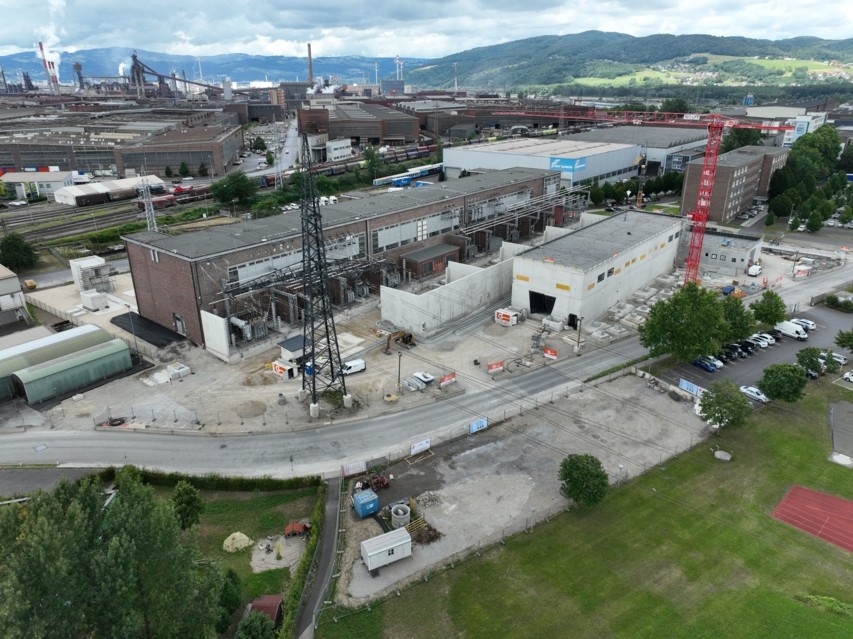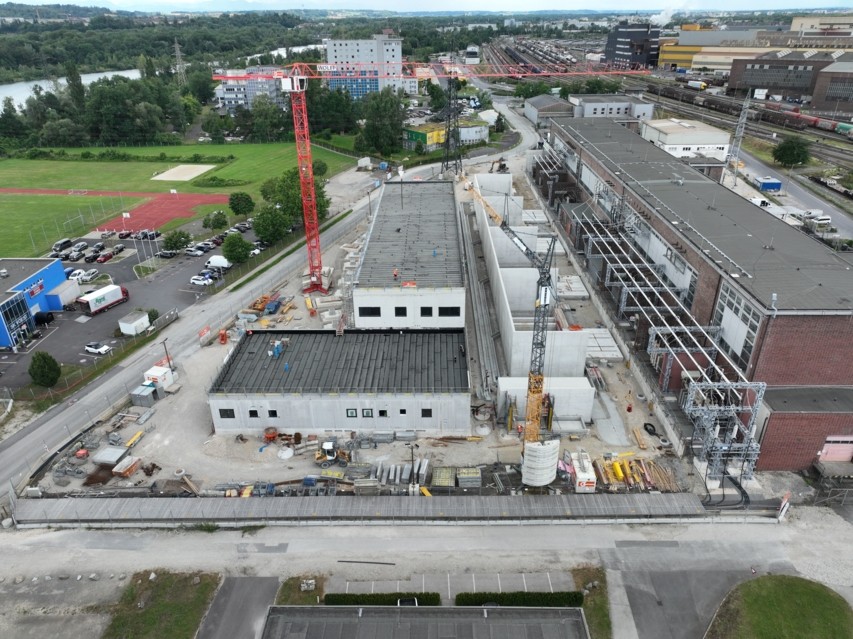220 kV in Central Upper Austria—the beginning of future sustainable energy in collaboration with APG
The History of electrical power infrastructure
Local energy supply companies have been planning to revamp the electric power infrastructure in the central region of Upper Austria since the early 2000s. The Austrian Power Grid (APG) as operator of the Austria-wide transmission network has played a leading role. It was planned to bring the 220,000 volts (220 kV) to the city of Linz in substations in Pichling and Wegscheid.

Need for an electric arc furnace
Once the preliminary electric arc furnace project began, it became clear that electrical supply from the 220 kV grid would be necessary for future plant expansion. This is why voestalpine contacted APG in order to expand the network by means of the new 220 kV South Substation on the works premises. In 2018 voestalpine submitted the official application for access to the 220 kV grid.
The 220 kV project: "Secure Power Supply for Central Upper Austria"
Five new 220 kV substations will be rebuilt and expanded in several stages by 2030. These are located in Pichling, Wegscheid, Kronstorf and outside the EIA project of Ernsthofen and the South Substation. The substations are connected with each other in annular design in order to increase reliability of supply. The required overhead lines and cable routing infrastructure are mostly in the vicinity of the current 110 kV lines.
Initial milestone reached
The licenses were obtained from the authorities once the in-house project to reinforce the main works power supply had been approved. The 220 kV South Substation is the responsibility of APG and was approved in 2019 and 2022. Construction work on the site of the future substation began after that.

Environmental Impact Assessment (EIA) completed
In parallel with our activities, APG has performed its own environmental impact assessment (EIA) for those portions of the Central Upper Austria project outside the works. Experts from over 20 fields of specialization, including electrical engineering, environmental aspects, forestry etc., issued professional opinions, and the community was informed about the project. Following a positive EIA judgement in March 2023 and subsequent appeal proceedings, the Federal Administrative Court issued a final judgment on the approval in June 2024.
This will allow construction work on the 220 kV system for Central Upper Austria.
Power source for the electric arc furnace
The APG substation in Kronstorf is part of the Austria-wide 380 kV transmission network. This is the highest voltage level in Austria at which electricity can be transported over long distances and sourced from remote power plants, for example from large wind farms or storage power stations. Powerful 380/220 kV transformers in Kronstorf and Ernsthofen connect the 220 kV grid in Central Upper Austria with the electric arc furnace.
Conclusion: A sustainable future for electric power
Now that the license to construct the system has been legally granted, nothing stands in the way of completing the 220 kV power supply system for the electric arc furnace. All in-house and external construction projects can now be implemented in order to ensure a sustainable and reliable energy future for the Central Upper Austria.
About greentec steel
The greentec steel project of voestalpine is an ambitious step-by-step plan that makes a valuable contribution to the achievement of the climate goals. As a first step, the voestalpine Group plans to replace two blast furnaces with two electric arc furnaces (EAFs) by the year 2027. The investment volume amounts to roughly 1.5 billion euros.
CO2 emissions can be reduced by around 30% by 2029 by making this switch from the blast furnace to the EAF. This corresponds to a savings of nearly 4 million tons of CO2 per year, amounting to almost 5% of the carbon emissions in Austria. This makes greentec steel the largest climate protection program in Austria.
The two electric-arc furnaces will enable voestalpine to produce roughly 2.5 million tons of carbon-reduced steel by the year 2027, roughly 1.6 million tons in Linz and 850,000 tons in Donawitz. Learn more about greentec steel here.
